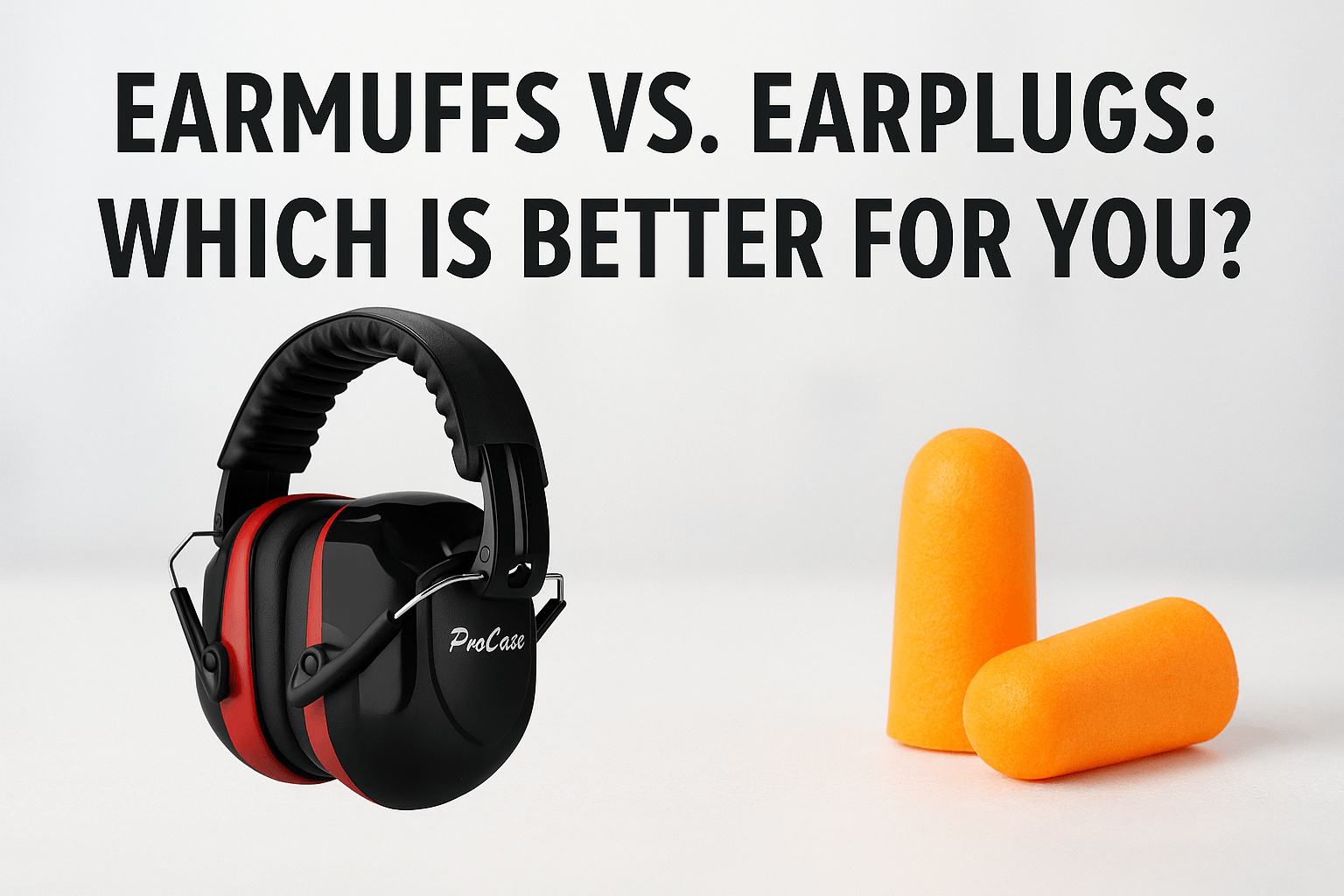
When it comes to protecting your hearing, the choice between earmuffs and earplugs isn’t one-size-fits-all. Both can reduce dangerous noise exposure, but which is better depends on the situation, the noise level, comfort and fit, and whether you need to hear certain sounds (speech, range commands, alarms). Below is an objective, evidence-based look at the strengths and limits of each, with practical scenarios and recent guidance.
1.How hearing protection is measured?
Hearing protectors are rated using the Noise Reduction Rating (NRR) — a laboratory number (in decibels) that helps compare potential attenuation between products. Higher NRR can indicate more protection on paper, but real-world protection depends heavily on fit and correct use. For most general uses, an NRR in the 20–30 dB range is considered effective; however, actual attenuation is often lower in practice, so industry guidance applies derating factors when estimating real protection.
2.Strengths & limits: Earmuffs
Pros
- Easy to put on and take off; consistent fit for many head sizes.
- Better choice when frequent on/off is required (work breaks, passing conversations).
- Electronic earmuffs (active noise reduction/amplification) can protect against impulse sounds (gunshots) while allowing safe sounds (speech) to be heard.
Cons
- Bulky for long wear in hot environments.
- May not seal well with glasses or hard hats unless designed for that use.
- Lab NRR can overstate real protection if seals aren’t perfect.
When to choose earmuffs: shooting ranges, lawn/yard work, noisy workshops, short-term high noise where you need ease of use or situational awareness — especially if you prefer a comfortable over-the-ear option or want electronic amplification features. Recent manufacturer and lab testing show earmuffs provide strong broadband attenuation and good performance for impulse noise when paired with correct features.
3.Strengths & limits: Earplugs
Pros
- Extremely portable and low profile (great for travel).
- Often provide high NRR values (foam plugs are effective when inserted correctly).
- Better for tight spaces under helmets or with glasses.
Cons
- Correct insertion is critical; mis-insertion drastically reduces protection.
- Less comfortable for some people over long periods.
- Single-use foam plugs must be replaced frequently for hygiene and fit.
When to choose earplugs: long quieting sessions where portability is important (flights, concerts if recommended), or when wearing headgear makes earmuffs impractical. Foam plugs are great if you know how to insert them properly; custom molded plugs can be worth the investment for frequent users.
4.When both are best: double protection
Industry guidance recommends double protection (earmuffs over earplugs) in very loud environments — particularly when exposures approach or exceed 100 dBA, or for intense impulse noise. Adding both typically yields extra attenuation; practical guidance and lab work indicate combined use can provide significantly more reduction than either alone. OSHA/NIOSH guidance and manufacturer data note that double protection is appropriate when single devices can’t reduce exposure enough; manufacturers often model combined attenuation as adding roughly 5 dB to the higher NRR after derating, and some lab studies show even larger, frequency-dependent gains.
5.Real-world performance & fit matters
A key takeaway from scientific reviews: fit and correct use matter more than the label NRR. Studies on personal attenuation show that formable plugs and earmuffs perform differently across users, and experts apply derating factors to better estimate actual protection in the field. In short, a well-fitted modest-NRR protector can outperform a poorly used high-NRR product. If you rely on hearing protection for safety, consider fit-testing (available through some occupational programs) or choose products with clear fit instructions and comfortable designs.
6.Practical scenarios
-
Shooting range / hunting: electronic earmuffs that attenuate gunshots and amplify speech are a popular choice; consider double protection for very high firepower or prolonged exposure.

- Construction / factory noise: follow workplace program guidance; if levels >85 dBA TWA, use certified protection and consider double protection above 100 dBA.
- Travel / flights: foam earplugs for cabin noise or noisy roommates; portable and hygienic.
- Home focus / remote work: passive earmuffs can help create a “quiet bubble” for concentration without removing situational awareness.
Bottom line
- Earplugs: best for portability and when headgear prevents muffs; effective if inserted correctly.
- Earmuffs: best for convenience, reuse, and situations where you need quick on/off or electronic features.
- Both: recommended for very loud or impulsive noise (>100 dBA).

Comments (0)
Back to Tech Guides